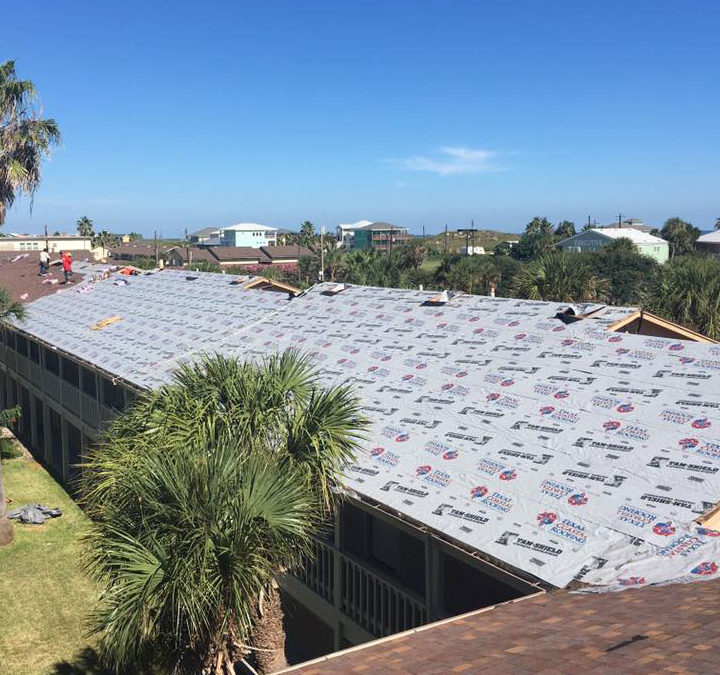Coastal climates bring their own set of challenges for roofing, particularly during the fall and winter months. The combination of high humidity, salt air, strong winds, and fluctuating temperatures can exacerbate common roofing issues. Here’s a guide to the specific roofing problems you might encounter in coastal areas during these seasons, along with tips for addressing them.
1. Salt Damage
What It Is: Salt from the ocean can accelerate the deterioration of roofing materials, leading to rust and corrosion.
Signs: Rust stains on metal roofing, accelerated aging of shingles, and visible corrosion on flashing and gutters.
Solutions: Choose roofing materials that are resistant to salt damage, such as aluminum or copper. Regularly clean and inspect your roof, and consider applying a protective coating to metal components.
2. High Winds
What It Is: Coastal areas often experience strong winds that can lift or damage roofing materials.
Signs: Missing or damaged shingles, bent or torn metal panels, and loose or damaged flashing.
Solutions: Ensure that your roofing materials are rated for high wind speeds. Reinforce roofing components with extra fasteners, and inspect your roof regularly for wind damage.
3. Hurricane Damage
What It Is: Hurricanes and tropical storms can cause severe damage to roofs, including torn-off shingles, punctures, and structural damage.
Signs: Significant damage to shingles, flashing, or roof decking, and leaks or water damage in the interior.
Solutions: Consider installing impact-resistant roofing materials. After a hurricane, conduct a thorough inspection and make necessary repairs as soon as possible.
4. Mold and Mildew Growth
What It Is: High humidity levels in coastal climates can lead to mold and mildew growth on roofing materials.
Signs: Dark streaks or patches on shingles, visible mold or mildew, and musty odors in the attic.
Solutions: Use roofing materials with anti-microbial treatments. Ensure proper attic ventilation to reduce humidity and address any leaks promptly.
5. Corrosion of Metal Components
What It Is: Metal roofing and flashing are particularly susceptible to corrosion in coastal environments.
Signs: Rust spots, pitting, and deterioration of metal components.
Solutions: Choose corrosion-resistant metals like stainless steel or coated aluminum. Regularly clean and inspect metal components and apply rust-resistant coatings if necessary.
6. Water Intrusion
What It Is: Heavy rain and high humidity can lead to water intrusion and leaks, particularly if the roof has existing weaknesses.
Signs: Water stains on ceilings, damp insulation, and mold growth.
Solutions: Ensure that your roof has proper sealing and waterproofing. Inspect and repair flashing around roof penetrations and ensure that gutters and downspouts are clear and functional.
7. Gutter and Downspout Clogging
What It Is: Coastal environments can lead to debris accumulation in gutters and downspouts, affecting drainage.
Signs: Overflowing gutters, water damage around the roof edges, and debris buildup in gutters.
Solutions: Regularly clean gutters and downspouts, and install gutter guards to minimize debris accumulation. Ensure that your drainage system is functioning correctly.
8. Temperature Fluctuations
What It Is: Coastal climates can experience sudden temperature changes, which can cause roofing materials to expand and contract.
Signs: Cracked shingles, gaps in flashing, and noticeable changes in roofing material alignment.
Solutions: Use roofing materials that are flexible and can withstand temperature fluctuations. Ensure proper installation to accommodate expansion and contraction.
9. Exposure to Sea Spray
What It Is: Sea spray can deposit salt and sand on roofing materials, leading to accelerated wear.
Signs: Residue or build-up on the roof surface, corrosion on metal components, and deterioration of roofing materials.
Solutions: Regularly clean the roof to remove sea spray residue. Use roofing materials designed to withstand salt and sand exposure.
10. Wind-Driven Rain
What It Is: Coastal storms can bring wind-driven rain that can force water under shingles or roofing materials.
Signs: Water stains on walls or ceilings, damaged shingles, and leaks around roof penetrations.
Solutions: Ensure that shingles are properly sealed and that all roof penetrations are well-sealed. Inspect and repair any damage from wind-driven rain promptly.
Coastal climates present unique challenges for roofing, especially during the fall and winter months. By understanding these common issues and taking proactive measures, you can better protect your roof from the harsh effects of coastal weather. Regular maintenance, proper material selection, and timely repairs are key to ensuring the longevity and effectiveness of your roofing system in coastal environments. If you’re unsure about your roof’s condition or need assistance with repairs, consult with a roofing professional who has experience in coastal roofing solutions.
Contact Us
Texas Coastal Roofing and Construction can help you maintain your roof’s excellent condition. We offer a variety of services. Call us today at (361) 332-1263to learn more. We serve the Corpus Christi coastal bay area including Portland, Rockport, Port Aransas, McAllen, North Padre Island, Kingsville, Mathis and more!


Recent Comments